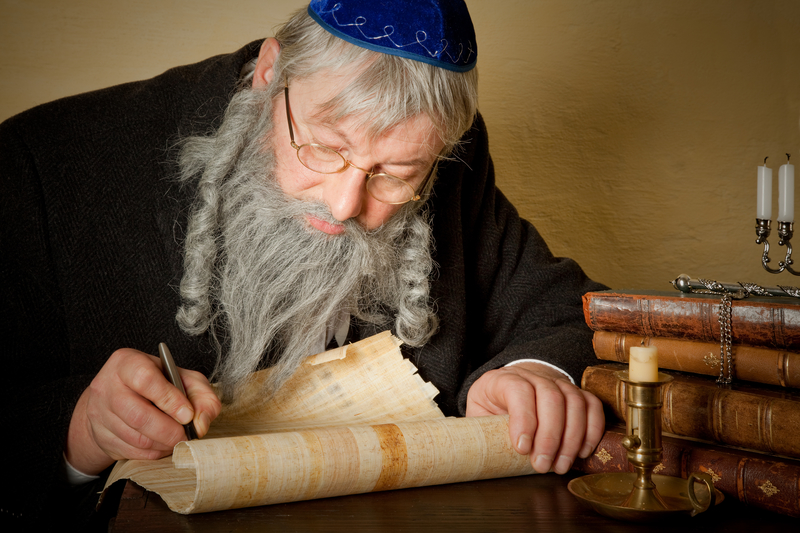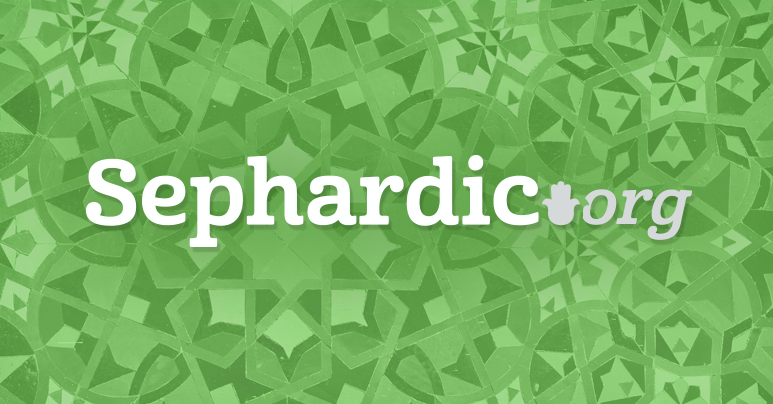
It is discussed in this week's perasha that amongst the gifts that the farmer is required to leave for the poor is the פאה - He is to leave over a portion of his field - its corner - where from the poor and the stranger can come and take. The Torah repeats an earlier noted requirement when it writes in our parasha 23:22 "When you harvest the fruits of your land do not consume פאת שדך - the edge of your field ... but rather leave it for the poor and stranger." The Torah originally taught us this law in 19:9 - "When you reap the harvest of your land, you shall not fully reap פאת שדך - the edge of your field.
Curiously, some verses later 19:27 the Torah enjoins us - "Do not cut off פאת ראשיכם - the hair off the edges of your head." We see that both rules employ the term פאה - and both require that it remain in its place with the owner forbidden to remove it. We shall explore the mystical elements behind the פאה - and elaborate on the reason it must be left to remain on the head or in the case of a field - left to remain for the poor.
The Need for Judgement
Before we proceed to explain the spiritual nature of the פאה - let us review quickly the format upon which the structure of the celestial world stands. The Sages describe this structure via their interpretation of a verse in Melakhim I 22:19 - "Therefore listen to the word of YHVH. I saw YHVH seated on his throne and all the hosts of heaven were standing by him on his right and on his left. This serves as a clue to the arrangement of the 10 (sefirot) - celestial spiritual channels.
The channels are seen as comprising three columns. The right column grades חכמה חסד נצח - channel the light of the Creator openly and without limitation. By allowing it to flow - it is the side of grace and loving kindness. The left column grades בינה גבורה הוד - restrict and shape the light. It is the site of judgement and discipline. The central column grades דעת תפארת יסוד channel the light by balancing the open flow of the right and the limiting flow of the left.
The reservoir or the ultimate receptacle of all that descends from above is called the מלכות - As a vessel which limits the light (as a cup limits the flow of water) it is said to be part of דין - or the left column - However, because it provides the light to all of the worlds below - it is also considered part of the central column. Every action - every word - every movement that we make - and as we shall see even the type of hair we keep has a cosmic effect on these channels.
Part of our service in the world is to temper and subdue the side of דין - However as we will learn shortly via certain misvot associated withפאה a semblance of דין - must remain and not be removed. All of this to allow the light of the Creator to be properly received below.
Pe'ah of the Head
We have learned in previous essays that the hair of the head has a spiritual association with דין - In this capacity it acts as an antenna to receive שפע from above. However if allowed to fester the hair can also attract a lot of negativity. R. HaAri teaches (TM and SM kedoshim) that head hair as a unit is parallel (in the context of Din) to the 10 spiritual channels.
The פאות הראש - correspond to the final channel or מלכות - it is numerically equal to אלהי״ם or 86 -hinting to its spiritual association with דין - While we are encouraged to periodically cut short or even shave our head hair to subdue דין - this does not apply to the areas known as the פאות - As they represent the semblance of דין which acts as a receptacle and reservoir for all of the שפע coming from above. If removed - it will cause the destruction of the vessel that needs to remain on our heads to properly parallel the spiritual מלכות above.
Pe'ah of the Field
It is important to note that the spiritual vessel known as מלכות has no light of its own. It is merely the receptacle for everything from above. Hence it is associated with the עני or the poor - It is for this reason that the פאה - must be left at the edge of the field for the poor. If the פאה -is not left for them - it is synonymous with destroying the reservoir or מלכות above - having catastrophic effects on the land owner.
To this end we can confidently state that the fields do not ripen solely for the land owners and the rich. It is the poor who are invaluable partners in the harvest. As they gather in the grain - they are spiritually associating with the reservoir called מלכות - The giver in caring for the poor via leaving the פאה- has created a vessel for himself whereby God will bless every grain within his field.
The Place of the Pe'ot
The physical place of both the Pe'ot of the head and the field are essential to be kept in order to parallel with the מלכות above. Though the פאה of the field belongs to a category of items which have no biblical amount - our Sages have set a minimum of 1/60 of the yield. In establishing the פאה which is parallel to the spiritual vessel above - the land owner must consider the abundance of the field, the resources of the owner and the needs of the poor.
The פאת הראש - extends from the corner where the two hairlines of the forehead meet - to the upper most point of the ear down to where the upper jaw bone separates from the skull (which is felt when opening the mouth)- the practical opinions vary in range from the middle of the ear hole all the way down to near the ear lobe.
It is important to note that R. HaAri is in agreement to the parameters of the region of the פאות as cited in the בית יוסף - However - while the position of Maran as to the length of the פאות might be subject to disagreement (Peot Zekenkha 48)- R. HaAri is clear that the פאות should be cut at the point that they extend into the area associated with the beard.
Jewish Spirituality
Other disciplines often dismiss the role of דין or "receiving" in their spiritual approach. The Navi ירמיה - calls (9:25) certain people's who inhabited desert areas קציצי פאה - Those who remove their פאות - It is apparent that the reference are to those - such as the monks who prefer to remove and not retain any semblance of a vessel to receive. Judaism recognizes these dangers but prefers to subdue and temper Din and receiving rather than eliminate it.
To this path - we are enjoined to leave the פאות- Likewise our fields must retain their פאות for the poor - They represent the spiritual vessels upon which the field and its owner are blessed. If theפאות of the head or the field are physically removed from their place - it will cause the removal of מלכות above - This will result in either our personal inability or our fields inability to receive from above. Hence we are enjoined to insure that the פאות remain in their place.








